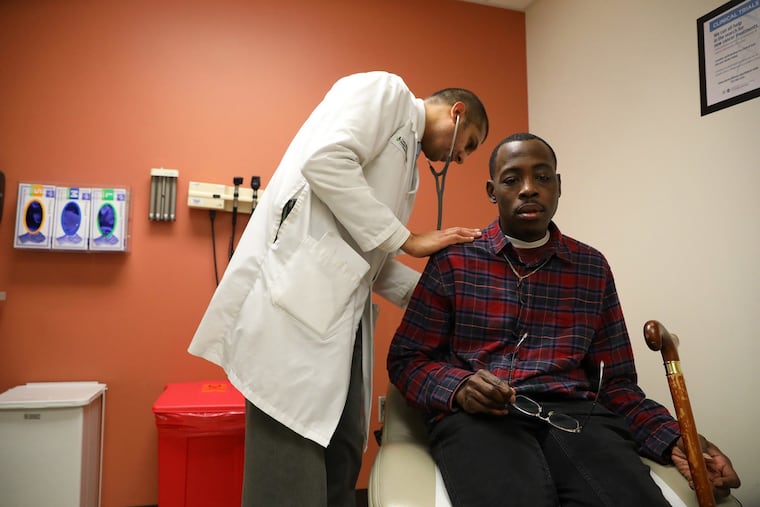A nurse reflects on implicit bias while caring for a patient with sickle cell disease | Expert Opinion
The patient was in pain. The doctor responded that he was a “frequent flier who was seeking narcotics.” The undertones of racism were clear, but I did not speak up.

While it stings to admit, many of us who had considered ourselves racially unbiased thinkers have learned otherwise, thanks to the racial reckoning ignited by police killings of George Floyd, Breonna Taylor, and so many other Black Americans.
Reflecting on my own complicity, a haunting memory has surfaced.
The year was 1983, I was a new nurse working the night shift. A young, Black male with sickle cell disease (SCD) was admitted in crisis. The pain medication of choice back then was a Demerol injection, which was immediately administered. I gave him a tall glass of water and extra blankets because my recent nursing education had taught me that hydration and warmth are important for patients with SCD. His call bell was placed in reach and I bid him good night. But a good night was not had. The pain medicine did not work.
The next Demerol injection was not due for three more hours and this man was in agony. I contacted the resident doctor and reported the patient’s pain to be a 10 out of 10, so bad that he was screaming. The doctor responded that this patient was a “frequent flier, a Sickler, who was seeking narcotics.”
His decision and words were motivated by what we now know to be implicit bias. The undertones of racism were clear, but I did not speak up. Although I tried to support this patient with the nonpharmacologic tools at hand, in the end, I failed him. We all did.
» READ MORE: A pediatrician who serves children of color discovered his implicit bias. Here’s what he’s doing about it.
Sickle cell disease is a complex, life-threatening, inherited blood disorder. Ordinarily, red blood cells are a concave, disk-like shape and can travel with ease, delivering oxygen throughout the body. In a patient with SCD, the red blood cell is crescent shaped, or “sickled.” This shape restricts the cell’s ability to travel and limits oxygen delivery, resulting in severe pain and organ damage. Although this disease affects people of all races globally, in the United States, patients are predominantly black. It affects more than 100,000 Americans.
Racism and care of sickle cell patients has long been an issue. Recent evidence shows that health outcomes and care for those with SCD are likely more affected by racism than any other patient population. Pain control for SCD patients is further complicated by reluctance to prescribe narcotics for fear of contributing to the opioid epidemic. So situations like that 1983 night shift are still happening today.
Why was care of this disease so focused on pain relief rather than addressing the underlying cause? Couldn’t we figure out how to “un-sickle” the cells? In 1984, one year after that memorable shift, hydroxyurea was identified as a treatment for sickle cell disease. In 1998, the Food and Drug Administration approved its use for SCD. Since 2014, the National Heart, Lung, and Blood Institute (NHLBI) has published recommendations for treatment of patients with SCD, and the FDA has approved additional drugs. More exciting new technologies including potential cures are on the horizon. Wonderful news! But, what took so long?
A 2020 study in the JAMA network identified a gap in research funding for sickle cell disease by comparing it with cystic fibrosis (CF). SCD and CF have many similarities; both are inherited disorders, both are associated with intermittent exacerbations that require hospitalizations and can lead to substantial reduction in median life span. The striking difference between these diseases is race. In the U.S., 1 in 365 Black individuals is born with SCD, whereas the birth rate of CF is 1 in 2,500 white individuals.
Results of this study showed that federal funding, foundation expenditures, FDA approvals, and research publications were far greater for cystic fibrosis compared with sickle cell disease, which experts link to decreased research productivity and novel drug development for SCD.
The past cannot be changed, but it can inform positive action in the future. Step one is to recognize the racial overtones in health care, including, but certainly not limited to, the treatment of sickle cell disease. Second, support SCD research. Third, follow the National Heart, Lung, and Blood Institute recommendations, which include individualized care plans, SCD protocols, promoting provider knowledge, reducing bias, and encouraging the use of electronic health records.
In his book Uncomfortable Conversations with a Black Man, former Philadelphia Eagles linebacker Emmanuel Acho discusses the importance of seeing people as individuals. This sentiment can surely be applied to health care. Every patient deserves to be listened to and treated without bias. When someone has pain, there are many ways to measure it. But, ultimately, pain is what the patient is feeling.
The Rev. Dr. Martin Luther King Jr. once said, “In the end we will remember not the words of our enemies but the silence of our friends.” Unlike that night in 1983, we must speak up to to help ensure that health care is delivered effectively, equitably, and without bias.
Sherri Becker is a nurse and an adjunct professor of nursing at Gwynedd Mercy University.